#hans analysis
Text
The 13th post: More than a Disney Prince
“Hans is a prince. He is a Disney Prince, but he’s more than a Disney Prince. He is many things. And there are a lots of secrets and twists and turns that we take with Hans.”
"A lot of the scenes I recorded did not end up in the movie"
Santino Fontana on Hans.
From Admiral Westergaard to Prince Hans of the Southern Isles
As you will already know, Frozen is an adaptation from the tale “The Snow Queen” by danish author Hans Christian Andersen. Disney had been trying to adapt “The Snow Queen” for decades. Different ideas were developed and a lot of changes were made in the process (you have a really interesting post about Frozen’s development by @greatqueenanna here).
We know that at some point, when Elsa still was a villain, the idea for Hans’ character was a nameless “Admiral Westergaard”, who was Anna’s love interest.
Evil Elsa deleted scene
Elsa was then changed, from a villain to a villain who had a redemption thanks to Anna, while Admiral Westergaard became a surprise villain.
Fast-forward to the final act: Elsa creates an army of snow monsters to attack our heroes while Kristoff has “a Han Solo moment” and comes to help Anna. To halt Elsa’s attacking army, the two-faced Prince Hans triggers a massive avalanche — not caring that the avalanche also puts Anna, Elsa and all of Arendelle in jeopardy. Anna realizes Elsa is their only hope, so she convinces her to use her powers to save the kingdom (...) Elsa’s heart is then unfrozen allowing her to love again.
At some point, Admiral Westergaard was changed to Prince Hans of the Southern Isles. This is a strange change for a villanous character if you ask me: they not only made him a Disney prince by birth, but also gave him the first name of the author of the original tale. Besides, keeping in mind that the names of the main characters in Frozen are meant to be a Hans Christian Andersen reference (Hans Kristoff Anna Sven), prince Hans would somehow be the most important, because he’s the one who was given the author’s first name. Makes sense, doesn't it?
Oh, but maybe it's just a coincidence.
Besides this, there is the fact that the kingdom’s name, Arendelle, is based in the norwegian town of Arendal. The isles located south of Arendal are, in real life, Denmark. And Hans Christian Andersen was danish. So they gave prince Hans not only the name but also the nationality of the author.
Also a coincidence?
Disney gave us a huge, very important clue with the Frozen Fever map.

This picture was originally posted by @wrath-of-zirro. A lot to analyze here.
On the top left corner there is a map of real Arendall with Denmark on the south; and the Frozen Fever map on the right. It is clear "The Southern Isles" are the danish isles of Fyn and its surroundings.
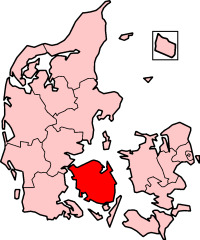
Map of real life Denmark with Fyn (Funen) in red from Wikipedia. Compare to The Southern Isles in the Frozen Fever map.
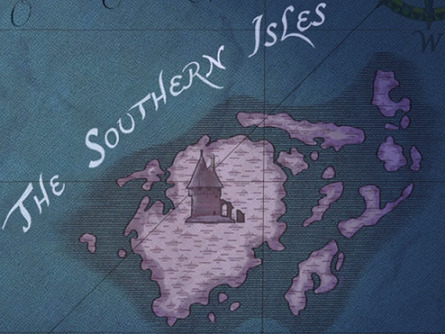
Hans Christian Andersen was born in Odense, capital city of Fyn.
In the bottom of the picture we see the Egeskov Castle in Fyn, whose tower reminds of the one we see in The Southern Isles in the Frozen Fever map. It looks like it the castle was still under construction in the Frozen Fever map (there are 13 princes, so they need a huge castle I guess!). It's quite hard to me to think all of this is just a coincidence.
But that is not the only Andersen reference. Hans having twelve older brothers reminds of Andersen's tale The Wild Swans. That tale is about a princess who has eleven older brothers. The princess is named Eliza, which reminds of Elsa and, not unlike her, she is taken for a witch and is almost killed for that reason.
It is also known that Disney planned to make a movie about the danish author's life which started developing in the 1940s (the same time period in which they started trying to adapt The Snow Queen).
That project was later abandoned. Nevertheless, Disney has adapted many of the danish author's tales.
So... could it be that when Frozen was finally made, the creators decided to pay homage to the danish author by making him a Disney Prince?
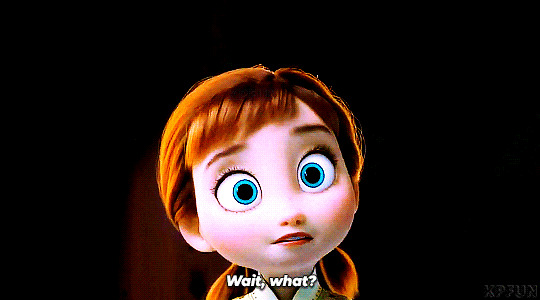
But wait... there is more.
Thanks to @thelittlehansy I knew Hans Christian Andersen himself appeared as an animated character in an episode of The Little Mermaid animated series, called "Metal Fish". So, if Disney already had an animated character design for H.C. Andersen, and Prince Hans was a tribute to the author, it would make sense they would look alike, wouldn't it? They just had to redesign the character to make him look young, regal and handsome. Let's have a look at how did the animated version of the danish author look like. I found the episode in swedish language on Youtube:
Part 1
Part 2


They look pretty similar to me. Ginger, big nose, large chin, with sideburns, wears a vest and, in the last scene, a tailcoat. Even the fringe is similar. If you still think all of this is a coincidence I have to disagree. As the Duke would say: The can be no doubt now.
Frozen Fandom: But that's not posible! Making the author a villain, not very important for the story, and the center of silly jokes?! That would be so disrespectful!
Well, I have spent two years trying to prove Frozen makes perfect sense withouth Hans being a bad guy. Santino Fontana said a lot of the scenes he recorded weren't finally included in the movie, so it's safe to think we miss a lot of information about the character. The movie is not badly written; it's too well written in fact: the plotholes are part of the plot.
Frozen Fandom: But Hans is the villain!! He plotted a whole plan to take over the kingdom, took advantage of Anna's vulnerability, leave her to die when she needed him the most and let's not forget almost decapitate Elsa after lying to her about her sister's death.
*Sighs in frustration* All you can accuse Hans of is being a jerk to a dying Anna, being in a very stressfull, life-or-death situation. But let's deny these accusations one by one.
Lying to Elsa about Anna's death: Technically, he wasn't lying, as Anna was dying because of ice magic and Hans though (because of Anna's own words!) Elsa willingly attacked her.
Almost decapitated Elsa: Already explained in the 11th post of this analysis.
Leave Anna to die: Hans was sure there was nothing he - or anyone else - could make to save Anna, and let's not forget the overall situation: people in the kingdom was in inminent risk of dying because of the winter (remember the Duke's words: if we don't "do something" ( = kill Elsa) soon, we all will freeze to death), and he was really shocked (see 9th post of this analysis) to know Elsa had attacked Anna.


Plotted a whole plan to take over the kingdom: The only evidence for this is his own "villain monologue", which I don't think we should take seriously for reasons already explained in the 9th and 12th posts. Telling Anna he wanted to marry her and then arrange "a little accident" of Elsa is more him being a jerk than confessing an evil scheme.
Took advantage of Anna's vulnerability: I have to disagree. I think he manipulated her a bit, but not all of the time. If we look at their "date" from an objective point of view, we realize that for the most part he was just being friendly. Dancing, taking a walk, eating something is not something particularly romantic.
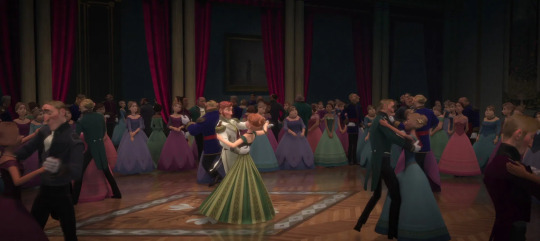
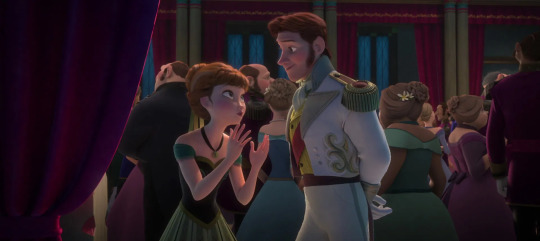
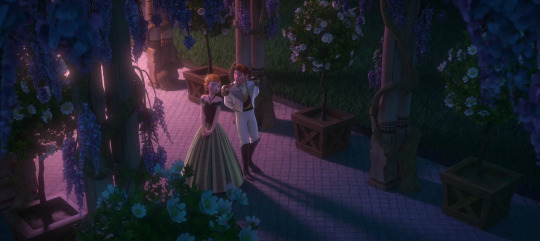
There were not ardent love expressions, he didn't even tell Anna he loved her. Can we really say he "seduced" her? The shoulder bump is romantic? It's more a friendly gesture, that is coded later in the saga as a "sibling thing".
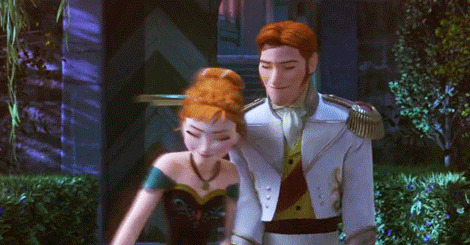
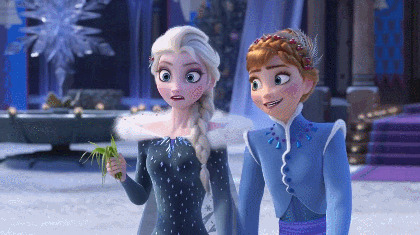
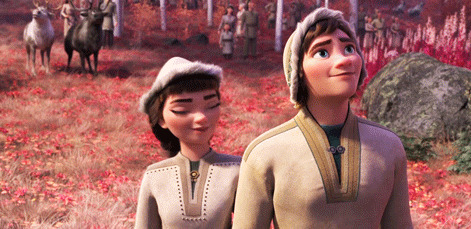
We are led to see the scene in a subjective way, through Anna's eyes. But if we rewacht the scene from an objective point of view, all we see is a friendly interaction.Things don't get really "romantic" until "Love is an Open Door". And let's not forget it's Anna who begins it and this is Hans' first reaction:

Then he basically plays along with her, and at the end of the song - when he proposes to her - that's where the manipulation begins.
Another reason against Hans being a villain would be his facial expressions. He only has facial expressions that could be labeled as villainous in a few scenes (already explained in previous posts). I find it very telling that when he sentences Elsa to death, creators chose to give us a close-up of his face expressing sadness - when a smirk would be more fitting, since this happens after the betrayal scene. It's like they wanted to tell the audience: "No, Hans is not happy to sentence Elsa to death; he is devastated".


Frozen Fandom: He`s faking to the Duke and the dignataries.
It could be, but it's unusual for Disney characters to fake to the audience. Gaston makes villanous expressions since he first appears, so the audience can easily identify him as a villain... but everyone in the town think he's a great guy!
And Mother Gothel... think how interesting would it be if the audience wasn't given the backstory at the beginning of Tangled. But still in that case, we would be able to analize her expressions and realize they are different from those of a worried parent.


Frozen Fandom: well, so who do you think is the villain then?
Simple: there is no real villain in Frozen. But there are two fake villains. This pair.

Before we continue we have to make the following question: who is this Elsa?
But was she the cursed princess to be saved, or the wicked witch to be vanquished? And what was his role in this story? (A particular understanding, by @fasadi)
Elsa: A witch in distress
While most of the audience identifies Elsa as a princess, making Frozen a "two princesses movie", this is only half truth. Anna is "the princess" and real protagonist in Frozen, while her sister shares some traits with other kind of classic Disney characters. Let's see: Elsa...
Is older than the princess
Has magical powers
Lives isolated
Has a position of power (she's the princess heir and becomes the Queen)
Wears heavy make up
Wears purple clothes (her coronation cape) and uses purple eyeshadow
Curses the princess and the kingdom
Her actions have a huge impact on the plot
Has a great (villain) song
Is (almost) killed by the prince
The 13th Disney princess shares these characteristics with these ladies:

From my point of view, the Evil Queen from Snow White is the one that has had the biggest influence in Elsa's look. I found the following description of the Evil Queen on the Disney fandom wiki very fitting for Elsa:
"From the outside, the Queen appears to be calm, regal, and sophisticated, but in reality, this collected and stately facade hides an extremely sadistic, hateful, cold and sinister person" (Elsa's facade is similar and also hides her real self)
"The Queen is an icily beautiful woman with a serene, unfeeling face and a slender figure. She has pale skin, red lips, green eyes, and seemingly penciled-on eyebrows"


They both wear a long cape with a pendant. You can't really blame the Duke for thinking Elsa was "a wicked witch conspiring to destroy us all", can you? After all, this is a fairy tale. There has to be a witch!

(Full comic here. A very fun comic showing Hans has all the traits of a classic Disney Prince. I'd love to see something similar with Elsa as a classic Disney Witch!).
At the end of the day, Elsa mortally attacked her sister and almost killed her whole kingdom because she had a massive anxiety attack. But even if she is, technically, a Disney witch and the villain of the movie (in the sense her actions are those of a villain) Elsa is not evil. Her thoughts, feelings and motivations are very different of those of a villain. She can't control her powers and feels unable to cope with the problems she has created, so her response is to run away.
This learned helplessness makes her another classic character: the damsel in distress. Elsa has to be saved from those who want to kill her to end the eternal winter and save the winter. She is first saved by Hans, who risked his own life entering the Ice Castle to save her from the Weselton guards and was able to stop her with a sentence that basically meant "I trust you" (whole analysis in the 7th post) and later saved by Anna. And, just like Hans saved Elsa from killing two men, Anna saved Hans from killing Elsa.
But, just because the audience "knows" Elsa they fail to identify her as the witch of this tale. They fail to understand that the Duke's reaction and prejudices against Elsa were, in fact, quite logic and understable. They fail to understand that (almost) everyone in Arendelle feared Elsa and wanted her dead, so the curse disappeared. The audience has all the information they need to realize Elsa meant no harm but... do the audience has all the information they need to understand Hans' character, and his sudden change at the end of the movie? I'm pretty sure we miss essential information.
Remember my interpretation of the gloves parallel in the analysis of the betrayal scene? One glove off = fake villain reveal. Now look at the Hans and Elsa dolls. "Hero and villain" series, and there are TWO sets of dolls. The first one: Elsa as the Snow Queen (hero), Hans in his fake villain reveal clothes (villain). The second one: they are in their coronation clothes, Elsa as a Queen who is secretly a witch (villain), Hans as the perfect Disney prince (hero). And the looks of complicity are very obvious.
And if Prince Hans' inspiration was the danish author himself, is there some real life woman behind Elsa?
The answer is Yes.
Hans Christian Andersen's inspiration for the Snow Queen was the most important of his (long) list of imposible loves.
Jenny Lind
Johanna Maria "Jenny" Lind (6 October 1820 – 2 November 1887) was a Swedish opera singer, often called the "Swedish Nightingale". One of the most highly regarded singers of the 19th century, she performed in soprano roles in opera in Sweden and across Europe, and undertook an extraordinarily popular concert tour of the United States beginning in 1850. She was a member of the Royal Swedish Academy of Music from 1840.

Yes, I know she doesn't look like Elsa. But still, she was the inspiration for the Snow Queen, and Elsa is inspired on the Snow Queen, so... she somehow "is" Elsa.
From Wikipedia:
She toured Denmark where, in 1843, Hans Christian Andersen met and fell in love with her. Although the two became good friends, she did not reciprocate his romantic feelings. She is believed to have inspired three of his fairy tales: "Beneath the Pillar", "The Angel" and "The Nightingale".[4] He wrote, "No book or personality whatever has exerted a more ennobling influence on me, as a poet, than Jenny Lind. For me she opened the sanctuary of art."[4] The biographer Carol Rosen believes that after Lind rejected Andersen as a suitor, he portrayed her as The Snow Queen with a heart of ice.
One of his stories, "The Nightingale", was written as an expression of his passion for Jenny Lind and became the inspiration for her nickname, the "Swedish Nightingale".[46] Andersen was often shy around women and had extreme difficulty in proposing to Lind. When Lind was boarding a train to go to an opera concert, Andersen gave Lind a letter of proposal. Her feelings towards him were not the same; she saw him as a brother, writing to him in 1844: "farewell ... God bless and protect my brother is the sincere wish of his affectionate sister, Jenny".[47] It is suggested that Andersen expressed his disappointment by portraying Lind as the eponymous anti-heroine of his Snow Queen.[48]
So, to sum up this very long post:
Hans and Elsa
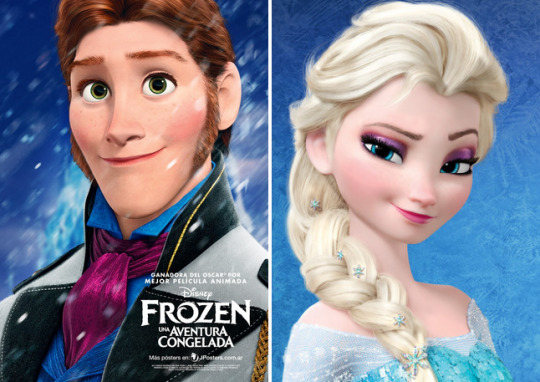
Who people think they are

Who they really are
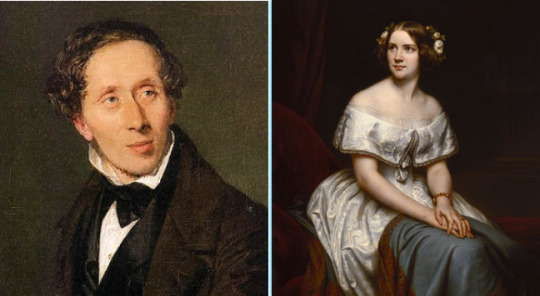
Conclusion
So... if I'm on the right track, and Disney created Prince Hans' character as a tribute to Hans Christian Andersen, wouldn't it make sense they planned to give him the happy ending he did not have in real life?
Time to analyze the Helsa hints...but that will be in a next post.
First post of these series here.
#frozen#disney#frozen analysis#hans analysis#hans#prince hans#hans of the southern isles#prince hans of the southern isles#hans frozen#let's redeem hans#my theories#who is this hans#disneyfilms#santino fontana#frozensource#elsa#queen elsa#elsa frozen#elsa disney#who is this elsa#elsa is a disney witch#frozen fever#the southern isles#fyn#fyn denmark#denmark#funen#funen denmark#egeskov castle#frozen disney
100 notes
·
View notes
Text
Headcanon that Eddie actively avoids Maddie because the first time they met she made a joke that he and Buck liked each other and Eddie has absolutely no poker face and panicked and they just made awkward eye contact and he has successfully avoided longer conversations with her for the past five years
#911 abc#9-1-1#eddie diaz#buddie#maddie buckley#maddie han#9 1 1#evan buckley#911 show#jwpyyy#silly ones#analysis ones#tops#fic prompts
2K notes
·
View notes
Text
So I've recently been re-reading TCF And chapter 196 is such an excellent example of how Cale interacts with the people around him, how he views himself and how they view him. This is also at the point in the novel where he hasn't really accepted that he is Cale now, not KRS, because he doesn't feel like he can.
So anyway, we start the chapter seeing the people of Rain City react to Cale's shield and they say something important!
"Won't he faint is he uses such a large shield? Why doesn't he just activate it when the northern bastards come?"
"Can't you tell? He doesn't want to see us or the territory getting hurt at all."
At first, I thought this was just the regular drama of people reacting to Cale, but then Choi Han, the kids, and Ron tell him he's being ridiculous, and I realize the townsfolk are right.
The Wyvern Battle is only the 2nd or 3rd major battle Cale has been in so far but only as Cale. As KRS, he's done this before, and having read later chapters, we know Cale holds so much guilt over those battles and how he wanted to keep those he cared for away from it all but couldn't. After all, record only gives him information to guide them and make plans; he often couldn't physically protect them. How many times has he defended a shelter or teammates and wished he could have just covered them all with a shield instead of giving commands from the back? We know how guilty he feels over Choi Jung Soo and Lee Soo Hyuk's deaths.
He knows he doesn't have to keep it up, and he's the one who spreads a rumour that it's taking all of his energy, but he's already considering himself a "bad person" for taking military command and only giving orders. (except that's what it means to take military command?) There is absolutely another motive for keeping the shield around the city. Cale wants the opposing forces to view him as weakened, or he doesn't want people to think his power is as strong as it is. However, at the same time, he's absolutely protecting them because, just like the townsperson says, he doesn't want to see any of them get hurt by an attack he could have blocked.
Cale is doing what he can to undermine himself while claiming he's going to make everyone else the hero of this battle, but he won't drop the shield, which means no one can disregard or forget his involvement. It's not intentional! He's just literally made himself the first line of defense as a direct parallel to every time he was the last line as KRS. He wants to stay at the back, he does not plan to get involved unless he has to, but Cale won't let himself stay out of it. So the shield goes up and stays for multiple days.
Meanwhile, all Choi Han, Ron and the kids see is Cale surrounded by paperwork (because taking command of the entire Northeast is a lot of work), keeping a shield up that's known to make him cough up blood (they don't know about it getting stronger or the vitality of heart), and only sleeping 1 to 2 hours a night (thank you crybaby), so they assume it's a combination of work and concentration to keep the shield up. As usual, they're worried and frustrated at Cale's self-sacrificing tendencies.
We haven't even gotten to the actual battle yet, but this is such a great setup of how it's going to go and how the novel goes.
#tcf re-read#It's the fact that you can pull this much information from 1 chapter (AND NOT EVEN THE WHOLE CHAPTER) and that's why i love this novel#He doesn't even realize what he's doing!#He refuses to even acknowledge it!!#The characterization is *chef's kiss*#I'm supposed to be working on my wip but instead i've written this#no regrets#tcf#tcf cale#tc feelings#tcf novel#TCF whump#TCF angst#cale henituse#choi han#ron molan#raon miru#tcf ohn#tcf hong#trash of the counts family#tcf analysis
543 notes
·
View notes
Text
I find it fascinating how much orv makes Kim Dokja and Yoo Joonghyuk live by the constraints of “reader” and “protagonist”. Like KDJ wants to see the ending but at the same time, he doesn’t and wishes the story would never end. Not simply because he loves this story but because he needs it like oxygen; TWSA gave him a purpose. He was its reader for 13 years and you notice KDJ never talks of what he’ll do after the scenarios until towards the end. There’s even a moment between him and Sangah where he ponders what he would’ve done if the novel never became reality. If he read the ending, closed his phone, and went back to his apartment. He contemplates if he would’ve killed himself, KDJ knows at least the sad truth that he wouldn’t have befriended Sangah. He’d never reconciled with his mother, he was getting laid off from his job in two days. From 15 to 28 TWSA was the only lifeline he had so think about it. What becomes of a reader when the story is over? One can discern, based on SP and OD’s conclusion, it is to find a new story. But Kim Dokja couldn’t bear to do that. To continue on, he needed to be a reader.

Lee Sookyoung wrote her novel to gain income for KDJ’s living but also to paint herself as the murderer. To sink the lie into KDJ’s head that she was the one wielding the knife. If the traumatized 12-13 years old Kim Dokja knew he killed his father by accident and his mother took the fall for him, KDJ would’ve killed himself. No doubt the guilt would kill him so LSK felt as though she had to do this. So that KDJ’s self-hatred would be aimed at her instead. She made her son a reader of his own life. It temporarily saves him, gives him some time but KDJ is still given a label “a son of a murderer”. His trauma was publicized and hyperfocused on, he was bullied excessively for it. That book is one of the factors that led to his first suicide attempt. So it doomed him.
HSY wrote TWSA to keep Kim Dokja alive. A desperate attempt to save a kid with one foot prepared to leap off a cliff. What else could she have done? She created characters that KDJ could aim his self-hatred at: Kim Namwoon, Anna Croft, the constellations, Nirvana. She made him a reader of a character’s life. Made him inject YJH’s essence through his veins like an IV drip. Of course, Kim Dokja wants Yoo Joonghyuk to be happy in the end. That is the main driving force between so many decisions he makes but where does leave him? The whole reason he attached himself to TWSA was because this protagonist was suffering too. But he kept on living round by round so surely, they could live through their shitty lives together. If the TWSA ended on that train, KDJ would truly be alone and might’ve killed himself. So what happens, the novel comes to life and gives him even more time. But because of that, later down the line KDJ will make the choice to become the Oldest Dream, a watcher for all eternity. Yes, KimCom’s world needed someone to dream for it to exist but even if that wasn’t necessary ... .do you think KDJ would have enjoyed a happily ever after discovering he was behind all their pain and tribulations? The guilt might’ve killed him, we saw some of that with his visceral reaction to OD. So it doomed him.
Kim Dokja has to be a reader.
Yoo Joonghyuk was created for Kim Dokja. This isn’t a shipping statement, this is just a fact. I think it’s foolish to believe that is all there is to his character, he’s his own individual and his journey throughout orv is keeping his autonomy and gaining agency. Outside of what he’s written to behave like or KDJ’s will for him. But his life’s purpose is to keep Kim Dokja alive. HSY wrote each of his regressions to save this one person. And this is where the 0th turn YJH comes in because he makes the decision to regress. He was happy in his world, that is true but he couldn’t truly rest because something was missing. Everything was idle, every day was peaceful after saving the world. But while yeah, KDJ was reading his story as always…he wasn’t being the protagonist. YJH needs to do something, he needs a goal to accomplish so he gives himself one. He regresses for three reasons: To meet his sponsor aka his reader Kim Dokja. To find out his purpose, what he was made for….which is to save Kim Dokja. And finally to fulfill his sense of self which is being a protagonist. Reaching self actualization and being an active force in the world around him. So fast forward when Kim Dokja’s fragments are scattered across the universe and the scenarios are over, why is it surprising that YJH falls into depression? Why is it surprising that he goes to HSY in the museum and seriously asks her to end his life? What becomes of a protagonist when there’s no one to read his story? What use is there for him? So of course he’ll be the one to venture on this suicide mission to space, hopping from one worldline to the next, grasping onto the fragile hope that KDJ can come home.
Yoo Joonghyuk has to be a protagonist.
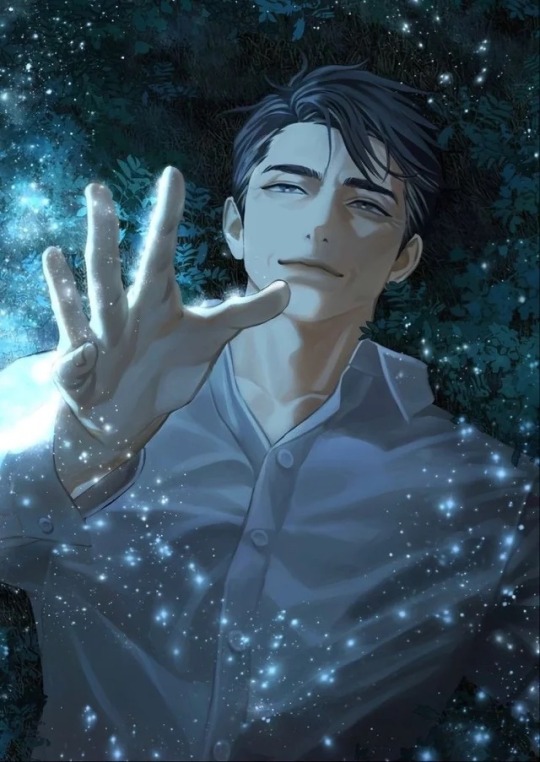
#KDJ and YJH give each other a reason for living#they are more than their assigned roles but cannot break out of them#because it’s all they know#omniscient reader's viewpoint#analysis#orv#kim dokja#yoo joonghyuk#dw HSY I’ll make an essay on you eventually#orv novel#sing shong#fyp#essay#oldest dream#han sooyoung#yoo sangah#I love orv so much guys#the cycle of pain :)
232 notes
·
View notes
Text
Kim Dokja and Han Sooyoung ship
When I read the novel I used to ship Joongdok and thought Han Sooyoung loved Kim Dokja by the end of the novel. Now that I’m rereading the novel to enjoy the side stories thoroughly, I don’t think Han Sooyoung’s love is unrequited. The signs are subtle but I think Kim Dokja is also at least slightly interested in her. after Kim Dokja and Han Sooyoung’s first parting (when HSY ran away leaving her avatar corpse) I could feel Dokja’s panic and sadness at that moment before he could think and Han Sooyoung’s expectations and thoughts on meeting him in the future (that was the first of it)
There was also that time when Kim Dokja was missing Han Sooyoung mid scenario soon after. The two were clearly interested with each other from the beginning and had some sort of tension. While Han Sooyoung’s feelings were comparatively more evident in the novel, we should agree that by the end that she did have some feelings for Dokja. As for Dokja, that dense bastard who didn’t even consider that his companions loved him and even when they showed clear affection towards him, he would get helpless as to how to respond to their affection, I doubt he actually caught on to Han Sooyoung’s feelings for him and actually started liking her without realising it himself, plus all the WOS coming to life and scenarios one after the another, I doubt he even had the time to care about who he has feelings for (and even if he did, his fourth wall or even his own personality would try to self rationalise to convince it to be something else)
The whole Kaizenix arc, the promise between Sooyoung and Dokja that Dokja wanted to read a 3000 chapter romance novel she wrote , the epilogue chapters, the 1863rd arc and literally every arc where both Kim Dokja and Han Sooyoung play a major part and actually spend time together they have some tension between them. Personally, I like their relationship a lot and I think it plays a major part in the story, way bigger then some might realise other like realise cause yk… a female character getting between the more popular male x male ship…
The romance aspect of the story is really vague (except Jung Heewon and Lee Hyunsung, Hades and Persephone and Yoo Joonghyuk and Lee Seolhwa, even 999 Uriel and 999 Yjh)
in general but you cannot turn a blind eye to their relationship.
At the end what do y’all think ??
#omniscient reader's viewpoint#orv#orv han sooyoung#orv hsy#orv kdj#orv kim dokja#orv manhwa#orv novel#orv spoilers#omniscient reader fanart#omniscient reader spoilers#demon king of salvation#orv fanart#omniscent reader#my post#han sooyoung#kim dokja#yoo joonghyuk#orv yjh#orv webtoon#omniscient reader novel#omniscient reader webtoon#obey me shall we date#doksoo#doomed yaoi#we're all doomed#shipping#ship dynamics#ship dynamic#analysis
224 notes
·
View notes
Text
The Stages of Choi Han
So I decided to think over and analyze the progress of the relationship between Cale and Choi Han.
While we do occasionally get some Choi Han's POV, most of the story is still from either Cale's or general point of view, so we don't see his exact step-by-step thought process on what his views were regarding Cale.
So, here's my thoughts on what was going on inside Choi Han's head as the story went:
Stage 1: Confusion
Choi Han must have been pretty confused when he first met Cale. Still in major turmoil after the Harris Village massacre, here comes this drunk rich guy along, who offers him food and shelter for the night. Why? Random act of kindness? Something else? And things remain confusing the next day as well. Choi Han gets to wash up and rest a bit after his traumatic experience, giving him better clarity of thought, but definitely no better understanding of Cale, who apparently doesn't even want Choi Han to pay him back. Not to mention this creepy strong assassin butler he has and his son the chef... I picture Choi Han having three big bold question marks in his head at this point.
Stage 2: Respect
Things change after the interview. While Cale and the people surrounding him are confusing, the way he speaks to Choi Han make two things clear: one, Cale is a smart man. Two, Cale has a lot going on, but it doesn't seem to be anything sinister. The general vibe Cale is giving off at this moment is "possibly sketchy, yet mysterious and wise". He strikes right into the core of Choi Han's insecurity and helps him gather his resolve: he wants to avenge Harris Village, but he also wishes to protect. At this point, Choi Han switches from confusion to intrigue.
Stage 3: Loyalty
Cale has no idea when it happens, but it is clear: after they rescue Raon, Choi Han is definitely having thoughts about staying with Cale for good. Not only did Cale prove to him that he was a good person by helping a young creature escape a terrible fate for seemingly no reason... Cale also showcased just how thoughtful and competent he is. He is not only smart and knowledgeable, he is also a skilled leader. Even if Choi Han still has any left-over doubts, his question of "what will you do if the Dragon decides to follow you, Cale-nim?" makes it apparent; he's 100% talking about himself. At this point, he'd definitely be willing to follow Cale on a permanent basis as his knight.
Stage 4: Trust
So Choi Han already respects Cale, and has begun cultivating loyalty towards him during the trip to the capital. After they part ways, Choi Han follows Cale's instructions about finding Rosalyn and Lock. During this time unexpected issues arise, but Cale's information remained consistently useful and accurate. Choi Han also meets the "Secret Organization" again, confirming that following path set by Cale allowed him to find out more about Arm than he could manage by himself. He quickly grows attached to Rosalyn and Lock, faster than in "The Birth of a Hero", because through Cale's endorsement he isn't nearly as distrusting. And when Lock seems sick, Choi Han's first instinct is to go straight to Cale for help. And that trust gets rewarded. Then it becomes reinforced once again by the Vow of Death. Cale got upgraded from "sketchy but wise" to "definitely a good person with a lot of secrets".
Stage 5: Protectiveness
Choi Han was definitely protective before, but it got cranked up to 11 after the Plaza Terror Incident. Cale reinforces all previous impressions of respect, loyalty and trust through handling the attack almost flawlessly - except at the very end, Cale gets hurt for the very first time. Choi Han is furious. He threatens the guards to let him pass, showing how his number one priority is officially, Cale himself. His quest to avenge Harris Village still matters, of course, but Cale already swore an oath that he would help Choi Han with it (at least that's what Choi Han believes), so that's a non-issue. From now on, Choi Han's first, second and third priority is keeping Cale safe.
Stage 6: Familiarity
After the plaza, Choi Han heads off with Rosalyn and Lock to the Breck Kingdom. But while the bonds of friendship grow stronger between them, Choi Han still has every intention of returning straight to Cale after they're done. Cale isn't just a priority; he's home, the place Choi Han feels safest at. The way Cale treats him when the trio comes back proves to Choi Han that the feeling was not unfounded; in his absence, Cale helped rebuild Harris and made it home for Lock's siblings. As the next few months of "general relaxation" pass, Choi Han only settles more in his conviction. Everything he has now is thanks to Cale, who is a good person, trustworthy leader, and a good friend overall. Choi Han's feelings are no longer distant respect of an employee, and now he sees Cale as his new family.
Stage 7: Conviction
This stage is a little tricky. While Choi Han's feeling don't quite change through the next 2 years, they definitely grow in strength and intensity. Multiple instances of Cale getting hurt, as well as Choi Han witnessing the true extent of his recklessness, make him devote himself entirely to Cale and his cause. While fighting Clopeh, Choi Han expresses his determination to "create path for the real legend". Because Cale isn't just family: Cale is special. He is someone worthy of highest admiration in Choi Han's eyes. It's not fanatical obsession, not like Clopeh's later on, but something deep and profound that grows stronger with every single battle. The ultimate proof of it is Choi Han changing his attribute while Cale watches from the sidelines. Choi Han's goal itself now, is Cale's success. That is his conviction.
Stage 8: Understanding
Choi Han finally finds out the truth about Cale's transmigration thanks to the memories from Choi Jung Soo, sent by the God of Death. And while none of it fundamentally changes what Choi Han believes about Cale... it does give him a bit of a broader perspective on who Cale really is. Before, there was a lot of mystery regarding the extent of his knowledge, but Choi Han was fine with being kept in the dark. Now, enlightened about some of the mysteries surrounding Cale... Choi Han's conviction to help Cale succeed becomes stronger. Cale isn't just a person he chose to follow; they're actually countrymen, connected by his nephew. It deepens the bond they have, and from then on, Choi Han feels less like a follower of Cale, and more of a peer. They're truly friends, going on this journey side by side.
So there you go. The 8 stages of Choi Han's friendship with Cale.
Confusion
Respect
Loyalty
Trust
Protectiveness
Familiarity
Conviction
Understanding
I really love how their relationship plays out. Cale has many great relationships in the series, but there's something truly special about these two. No matter their differences or misunderstandings, they can relate to each other like no one else can. The mutual care and respect they have for one another is heartwarming. After all they lost, now they have someone who they can trust with their back. A real ride-or-die type of deal.
#tcf#trash of the count's family#lcf#lout of the count’s family#cale henituse#cale#tcf cale#choi han#tcf choi han#anaylsis#tcf analysis#character analysis#tcf meta#friendship#i love choi han#he's just awesome#no wonder cale liked him as the protagonist of tboah#tboah might have been a super angsty mess but choi han is always cool
234 notes
·
View notes
Text
I think about Star Wars a lot more than I post about Star Wars, and I've had some free time recently to type up some thoughts on Episode 7 that've been swirling around in my head for a couple of years. There were a few ideas and plot beats, and moments of apparent self-examination in Episode 7 which I thought were fairly compelling, even though they ultimately paid no dividends:
First was Finn’s character concept. “Star Wars as experienced from the perspective of a Stormtrooper undergoing a crisis of faith” is a rich hook; humanizing and giving a face to what's basically the platonic implementation of the faceless mook. Unfortunately, the potency of the arc was undercut by the pre-existing textual ambiguity as to what stormtroopers actually are. Star Wars extended canon has settled on the idea that each trilogy features an entirely novel cohort of white-clad mooks, each with a fundamentally different underlying dynamic. The clones and the First-Order forces are different flavors of slave army; in contrast, the stormtroopers are more frequently portrayed in the expanded universe as military careerists, stormtrooper being a thing you work up to rather than a gig for a fresh conscript. A slave-soldier who defects is a very different character from a military careerist who defects, and they invite different analysis. There's a bait-and-switch going on here, in that Finn gestures in the direction of the familiar OT stormtroopers but can't comment on or examine them because he's actually part of a novel dynamic invented for the new movies. And there's one final nail in the coffin here, signaled by the number of times I've had to invoke the expanded universe so far. When Finn debuted, the racists were of course, legion, but I also ran into a number of people who were sincerely confused as to why they'd recast Temuera Morrison. Going off the seven films that existed at the time, it wasn't unreasonable to read the prequel trilogy as an origin story for where the OT stormtroopers came from. Going only off the nine films that exist now, it still isn't unreasonable! It's muddied from so many different directions by their failure to establish the ground rules in the mainline films before they tried to put on subversive airs about it. I am still irritated by this.
Next up is how Han Solo was written. I actually liked the tack they took with him quite a bit. Because initially, right, his role in the movie is just to be Han Solo. He's back, and he hasn't changed! He's still kicking ass and taking names, he's still the lovable scoundrel you knew and loved from your childhood- and the principle cast members react to his presence with the same reverence the film's trying to invoke in the audience, they've grown up hearing the same stories about him. Except that episode 7, at least, is also very aware of the fact that if Han Solo is still recognizably the same guy thirty years on, it indicates that things have gone totally off the rails for him. We find out that the lovable rogue routine is the result of him backsliding, his happy ending blown up by massive personal tragedy rooted in communicative failures and (implicitly) his parental shortcomings. It feels deliberately in conversation with the nostalgic impulse driving the entire film- here's your childhood hero back just as you remember, here's what that stagnation costs. And it also feels like it's in conversation with what was a fairly common strain of Han Solo Take- the idea that Ep. 6 cuts off at a very convenient point, and that Han and Leia's fly-by-night wartime relationship wouldn't survive the rigors of domesticity. Obviously, that's not the only direction you can take with the character; the old EU basically threaded the needle of keeping Han recognizable without rolling back his character development gains. But it felt like they were actually committing to a direction, a direction that was aware of the space, and not a reflexively deferential and flattering one, which at the time I appreciated! The problem, of course, is that for it to really land, you need to have a really, really strong idea of what actually went down-of what Han's specific shortcomings and failures were. And given the game of ping-pong they proceeded to play with Kylo Ren's characterization, this turned out to be. Less than doable.
Kylo Ren is the third thing about Episode 7 that I liked. His character concept is basically an extended admission by the filmmakers that there's no way to top Vader as an antagonist. Instead, they lean into the opposite direction- they make him underwhelming on purpose. Someone who's chasing Vader's legacy in the same way any post-OT Star Wars villain is going to, pursuing Vader's aesthetic and the associated power without really understanding or undergoing the convoluted web of suffering and dysfunction that produced Vader. It's framed as a genuine twist that there's nothing particularly wrong with his face under that helmet. Whatever it takes to be Vader, he doesn't have it, and he knows that he doesn't have it, and the pursuit of it drives him to greater and greater acts of cartoonish villainy. The failure to one-up Vader is offloaded to the character instead of the writers, and it was genuinely interesting to watch. For one movie. The problem, of course, is that if the entire character archetype is "Vader, but less compelling," you can't try to give the bastard Vader's exact character arc. You can't retroactively bolt on a Vader-tier tragic backstory when you spent a whole movie signaling that whatever happened to him wasn't as compelling as what happened to Vader. You can't milk his angst for two more movies when it's the kind of angst on display in "Rocking the Suburbs" by Ben Folds!
There's a level on which I feel like Moff Gideon was a semi-successful implementation of Vader-Wannabe concept; he's the same kind of middling operator courting the Vader Aesthetic for clout, but he's doing it in the context of the imperial warlord era, where there's a lot of practical power available to anyone who can paint themselves to the Imperial Remnants as a plausible successor to Vader. Hand in Hand with this obvious politicking, Gideon is loathsome, which relieves the writers of the burden of having to plausibly redeem the guy; he's doing exactly what he needs to do and there'll never be a mandate to expand him beyond what his characterization can support. Unfortunately, the calculated and cynical nature of how he's emulating Vader precludes the immaturity and hero-worship elements on display with Kylo, which is unfortunate; the sincerity on display in Kylo's pursuit of authenticity is an important part of why he worked, to the extent that he worked at all, and it'd be worth unpacking in a better trilogy. As he stands Kylo is a clever idea, and that's all he is- he lacks the scaffolding to go from merely clever to actively good.
#and these are my unsolicited star wars thoughts#thoughts#meta#star wars#star wars sequel trilogy#kylo ren#moff gideon#han solo#star wars finn#star wars meta#sw sequels#the force awakens#analysis
823 notes
·
View notes
Text
y’all ever think about how Sangah never really escaped from being romanticized by people? i
I mean, dokja was never completely able to erase the romanticized version of her that he had before the scenarios. Dare I say it only got worse. I think that’s part of why people criticize her for being too much of a “Mary Sue”
It’s interesting how her development in dokja’s went from real to not-so-real through the novel while the novel characters had the opposite development, but that’s another topic.
Anyways, everyone in kimcom views Sangah as this perfect girl despite her dislike for such a perception of her… everyone except Han Sooyoung.
Happy pride month everybody
#i love sapphics#it’s so fun being a multi shipper#orv#kim dokja#omniscient reader's viewpoint#omniscient reader#han sooyoung#sangsoo#yoo sangah#orv analysis#orv ships
276 notes
·
View notes
Text
Hhhhhhh more AU's that I will never write based on that post that's like:
"You came back wrong and i am racked with guilt because i cannot bear to see you like this and i should have let you rest. i loved you so much that i defied death itself but i do not think either of us are happy."
Joongdok:
KDJ gets isekai'd right at the ending of Ways of Survival. The ending of a story is like death. There is nothing written past the Final Scenario and YJK slowly starts transforming into an outer god. Not like SP, but more like an extant form of life, with garbled memories and messed up form like 'Made in Abyss' if you've ever seen it.
YJK just looks like a blob of stories. He cannot even be called remotely human. KDJ tries to pick him up, but his existence is like a gelatinous sack, and sentences slip past his arms. He cannot even hold him.
They spend their days in N'Gai forest. KDJ tries to make him comfortable. He cooks for YJK. They watch rounds of Ways of Survival together.
I want to die I want to die I want to die I want to die
KDJ won't let him
Doksoo:
Her childhood friend committed suicide when she was young, and her therapist suggested she write out her feelings in the form of a story. Han Sooyoung is the type who loves hard, and the grieving process takes decades. By the time she's ready to let go, she's 26, and she's thousands of chapters in. She gets isekai'd into her own story.
KDJ is there, alive, like a protagonist
She spent years trying to understand him in the hopes he would be resurrected in her writing, but because her understanding of him stopped when he was at the lowest point in his depression, this Kim Dokja is eternally at his lowest point in the pages.
The narrative keeps him alive. The purpose of this story is so that KDJ can live.
Living is so painful for KDJ, but for a universe that was meant to grieve him, to hold onto him, to capture him 'exactly as he was' he is doomed to never become happier because a happier KDJ did not exist in reality. HSY tries. She tries so hard to change the already-written sentences.
She can't she can't she can't
The one who loves this story cannot change this story.
Yoohan:
A soul for a soul. That is the law of exchange in demonic pacts. They wanted to bring back their deceased mutual friend. They thought they were being smart and had found a loophole: they would each trade one half of their soul in exchange for one whole Kim Dokja. That way neither of them would die and KDJ would live. But demonic pacts aren't fair. The demon gave each of them one half of Kim Dokja.
50% YJK now inhabits 50% of KDJ in his body. He doesn't understand himself anymore. He's acting different and he knows it and its almost like he's a character and a reader is projecting himself into his actions.
50% HSY now inhabits 50% of KDJ into her body. She can hear him talking to her sometimes. She barely recognizes who he is.
HSY and YJK chase after the vestiges of someone else in each other.
(When they wake up the next morning, bare shoulders peeking past the sheets, they both turn their backs and start crying)
It's not who they're looking for. They cannot recognize each other broken. They cannot recognize themselves.
Who are you? Who am I?
No one is happy
#orv#omniscient reader's viewpoint#joongdok#doksoo#yoohan#han sooyoung#yoo joonghyuk#kim dokja#yoohankim#ao3#lialox writes#orv au#I don't like writing angst unless its a character analysis soooo#feel free to take these AU's and run with it lol#im more of a bittersweet writing gal#or 'tragedies with perfect endings'#but where's the sweetness in this? where's the 'perfect ending'? None of these AUs are for me :D
136 notes
·
View notes
Text
tbh after i read orv i had to say that hsy was the character i understood the least - i couldn’t understand her motivations and actions, and by the second half of the novel she’s someone else entirely. but I think as i almost conclude my first reread it makes more sense why
first of all, hsy’s lived 50+ years by then. she’s mellowed out. she may have gotten rid of most of her memories from that time by the time kdj finds her again, but she’s still had to live thru those 50 years and has been semi-conscious even after Yuri di Astriel’s ego tool over her body.
we didn’t meet the whole hsy at the beginning of orv. she was only about a half of the ‘original’ hsy. it seems like the hsy that went to the 1863rd worldline was evidently the one who knew more about twsa (given how she was able to get to the 95th scenario AND became a constellation similarly to kdj (1864 hsy was convinced abfd was the sponsor she needed so was not able to become a constellation in the scenarios)
so when 1863 hsy bestowed visions to hsy and her story [Predictive Plagiarism], hsy changed. i feel almost as if she matured after 1863 hsy helped her. before, when she started the scenarios, she was self-centered and repeatedly described to be someone who would betray others for her own benefit, and her change was even unusual for kdjc (evident thru the amount of times jhw clashed with her later on).
hsy is a different character by the second half of the novel - whole. and maybe this is why she was one of the first people to realize 49% kdj was not the whole kdj. because she was once a ‘half’, too. from the beginning, we only knew the ‘selfish’ part of her, which has never really left her. she was ready to sacrifice the world for her one reader if she could, ultimately resigning herself to to cling onto hope and write twsa and orv for him.
i can’t claim i fully understand hsy yet - maybe that will take a few more rereads for me. maybe it’s because i personally do not empathize with her as much as everyone else in kdjc. but i think maybe reading orv - a story longer than the bible that she wrote - brings me a little closer to her
#i know theres more abt hsy in like the last hundred chapter but i just hit 400 yesterday#forgive me if i missed anything later than that 💀#orv#hsy#han sooyoung#my ramblings#orv analysis#again 😔#orv spoilers
92 notes
·
View notes
Text





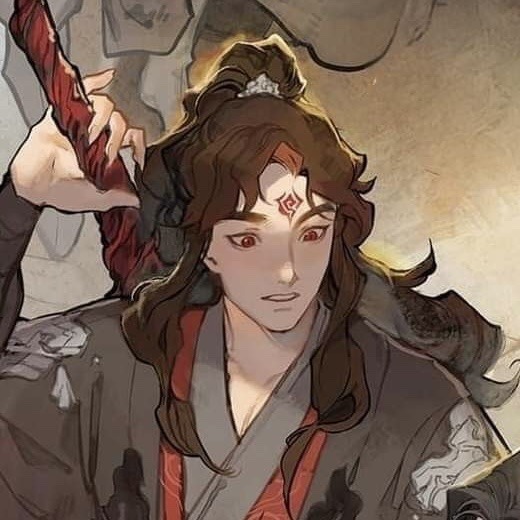
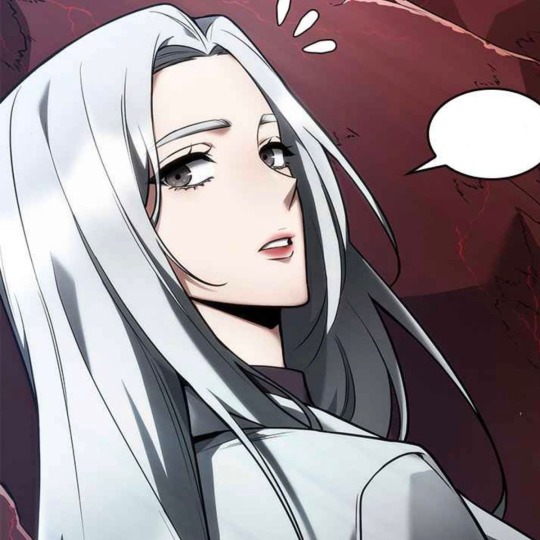
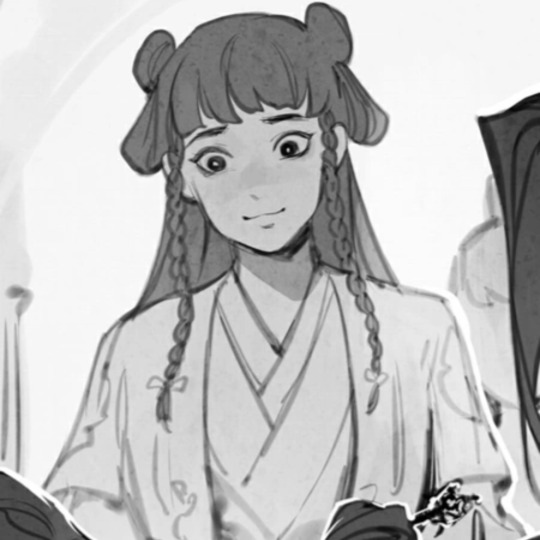
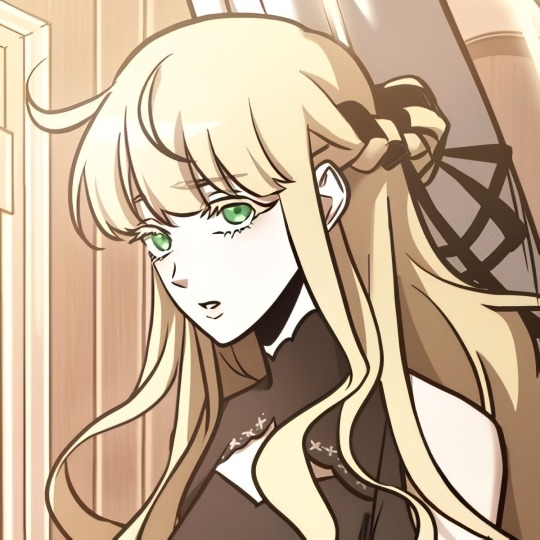

actual analysis to come but I’m being so serious when I say I’m onto something here and it’s profound
#like I think cross analysis would be beneficial if it hasn’t already been done#orv#svsss#omniscient reader's viewpoint#scum villain’s self saving system#shang qinghua#sqh#han sooyoung#hsy#demonic judge of fire#uriel#liu mingyan#orv spoilers#svsss spoilers#kim dokja#shen qingqiu#yu junghyeok#luo binghe#ning yingying#lee seolhwa
308 notes
·
View notes
Text
8th post has been edited
#frozen#prince hans#hans#disney#my theories#Hans frozen#Who is this hans#disney frozen#the fixer upper theory#Frozen analysis#Hans analysis
7 notes
·
View notes
Text
I love the madney and buddie parallels, ESPECIALLY when Buck and Eddie talk about Maddie leaving in S5 and Eddie tells Buck that Chim knows Maddie in a different way to him, and might have different ideas of what she needs, and then in S6 after the lightning, when Buck is overwhelmed by Maddie's help, he runs to Eddie, who knows what Buck needs in that situation.
Maddie and Buck had a traumatic childhood and both revert back to their old perceptions of each other when they're stressed, which is why Buck accepted Maddie leaving and why Maddie felt so desperate to protect and care for Buck after the lightning.
And both Chimney and Eddie are presented as contrasts to this, people who have a complex understanding of the people that Eddie and Buck have grown into. They both represent safety and growth for the Buckley siblings.
#i have definitely spoken about this before sorry#911 abc#9-1-1#buddie madney parallels#madney#buddie#eddie diaz#9 1 1#evan buckley#maddie buckley han#maddie han#chimney buckley han#howard chimney han#911 show#jwpyyy#parallels#analysis ones#tops
298 notes
·
View notes
Text
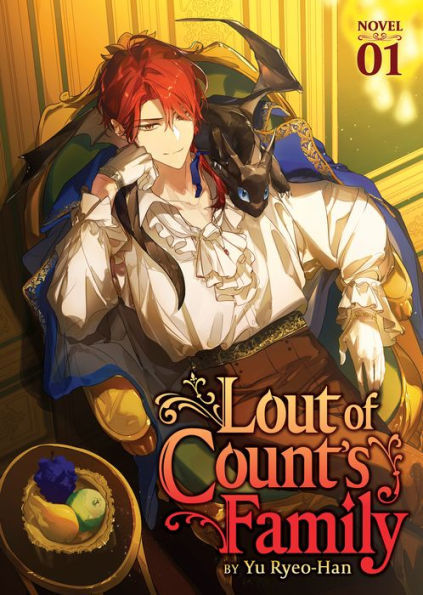
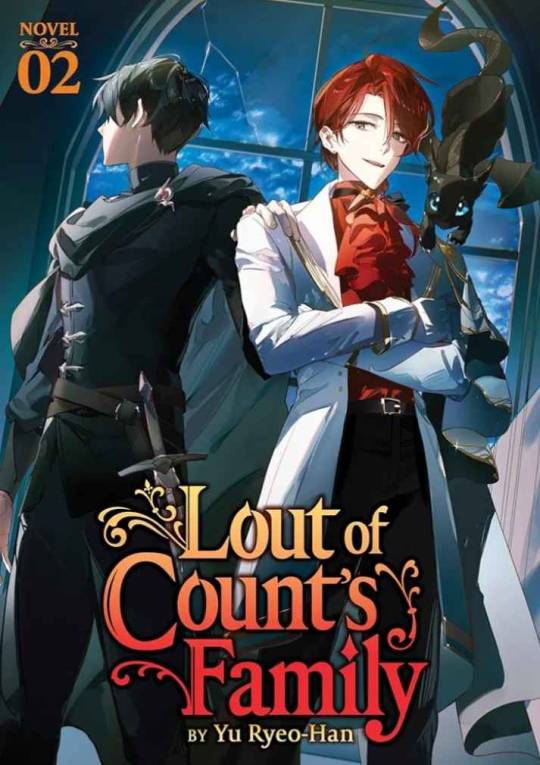
Speaking ab the cover art from a Design pov *aside frm the comments that Cale looks out of character in the lore standpoint of vol. 2 art
(spoiler free, dw)
◇ TLDR; vol. 2 cover is beautiful, but it couldve had better color synergy. I can see why the artists did what they did, its just not my fav.
. man I'm just happy to have an official English print lmao, ill take what I can get
---
At first I didn't like the red shirt cause it was too much the same color as his hair. (Like if it was a darker or desaturated maroon, I feel it would've looked better, at least so he isn't matching with his own hair-)
. But now taking a step back n looking at vol. 2 again, zoomed out, I actually think his Face is the most jarring part [more on that later ◇]
◇ . The bright red of the shirt being lit by a yellower light, altho matching w his hair, actually isn't so jarring to me anymore cause I noticed two things
◇ 1) his pants are also tinted red (if my eyes aren't deceiving me) meaning compared to the background and the other two characters, Cale *in his entirety* is a red-toned silhouette -> this is a illustrative design strategy where the artist assigns a group of colors to a specific subject n *Restrictvely* uses the Hue Differences to their advantage. In my opinion, its a good choice in making him contrast and stand out. You can definitely Tell he's the main character with just the cover art.
. BUT it can also give off an Outlandish or alien feeling because (in this case) Cale is the ONLY red in the scene. Theres no balancing of red tones from his character to the background At All (e.g. the artists doesnt add Any red to the surroundings so his character can "fit in" with the scene- like as if you photoshopped a guy in sunny lighting into a dark room, the lighting differences is jarring n you can tell the guy is just slapped on top [not saying the artist did that at all, but the way they painted Cale to stand out feels jarring in that sense). While this does an insanely good job at putting him in the spotlight, it perhaps does Too great of a job, making him feel isolated or strange compared to the rest of the piece.
. (Then again, you can justify that that was the goal. To isolate Cale n show hes alien from a lore standpoint as he's "not from this world" as an isekai story)
◇ 2) but we're forgetting this is a COVER art. It's not Just an illustration to be pretty. To break my earlier point, altho Cale IS the only red in the *Illustration,* this art piece is - fundamentally - a Cover Art. It has the Title thats a part of its design <-<-<- And if we looksey at the title, what do we see? Red and warm tones. Like what other thing thats only reds? Cale Henituse himself!
. The Title IS the balance I said was missing in point 1). My theory is thats Also why the artist tinted the lighting on Cale to be warmer n more yellow, so as to use the yellow orange in the title (and the contrast of cools n warms from the focal points to the rest of the art) to their advantage. It helps add reds to the lower half of of the piece where the only warm tones are Choi Han's hand (the other character) and the fleeting window curtain; both of those details being at the edges of the piece and Both very small so they hardly have an influence on the overall design.
. So the title, taking up the majority of the lower half of the piece, draws the warmth down n assists in balancing the overall cover design.
So the reds have now been explained, but why are the whites so white now?--
◇ . Earlier I had said Cale's face was the most jarring part of the cover. And I still fully stand by that sentiment. Its the same idea where the reds do Too great a job isolating Cale; the whites do Too great a job contrasting w the background n the two other characters - who are black n cool tones - to the point where it Heavily draws the eye, practically in a violent manner.
. The extreme paleness is quite lore accurate for Cale's character, who hes isekaied as, but the extreme lighting Highlighting just his face compared to Choi Han's face is an extremely bold design decision (again, not a bad thing as he IS the main focal point, but adding onto the Isolating Spotlight trait going on)
◇ Ok then, but why's his jacket also so freakishly bright white? I heard from a fellow lcf fan (love discussing w you dawg <3) that they think the jacket is the worst part of his cover design.
N I agree. The reds standing out can be justified as a design strat, his face is the focal point so thats why that stands out, but why the jacket??
. Here i am on my artist apologist era <3
◇ . The jacket being blindly white is (probably) to Dampen the Harshness of his face being so bright.
. Altho the guy looks great in white ☆°• with how extreme the lighting is in this cover art, I think the artist wanted to balance the laser beam that is Cale's face paleness by spreading it out to his jacket, specifically that left collar fold ( i think that's called the lapel?)
. Basically by making the jacket's collar also intensely white, the artist gives their best attempt at trying to make Cale's skin less jarring so as to not make it so ridgedly highlighted. Like black ink spilt onto fresh paper, they tried to spread it out so its not so condensed in high contrast. ...But that only made the jacket join in on the uncanniness- TTvTT
---
(Posting the pic again so yall don't gotta scroll far o7)
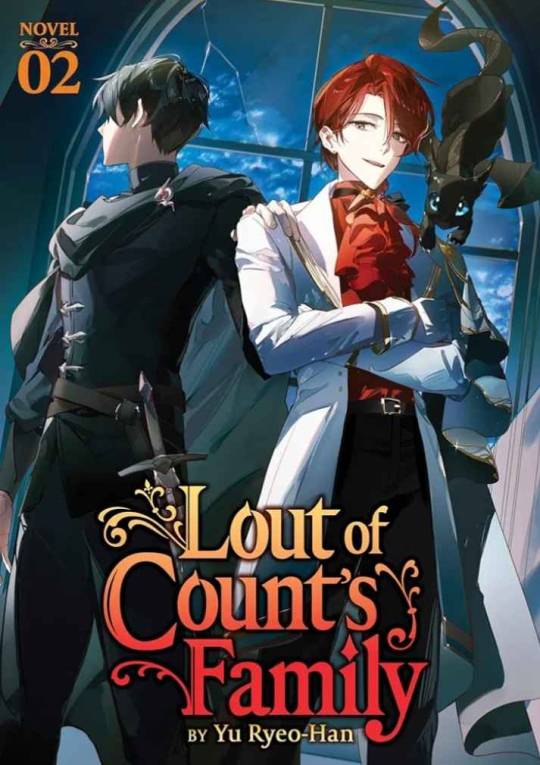
Other notes I've noticed n wanted to just point out while I'm here looking through the Design Lense ☆°•
☆ The red of Cale's hair and the red of his shirt n neck scarf sandwiches his face, making it stand out even More. Ealier I said the contrast of the vibrant red to the paleness makes his face draw the eye, but thats also thanks to the *position* of the colors! Not just the colors themselves B) isn't that so cool (tell me yes even if you have to lie-)
☆ The lighting on Choi Han's cape, chest, to face -> the window arch -> to Cale's entire person being lit up + how he's wearing a long white jacket
. It all creates this general arch of light tones and highlighted features which surrounds and hugs the title! The artists really knows how to use their darks and lights !!
☆ Choi Han's entire person, Cale's pants, and our lovely Roan Miru (the dragon) are the only deepest dark black tones in the entire piece! The privilege of being the subjects <3
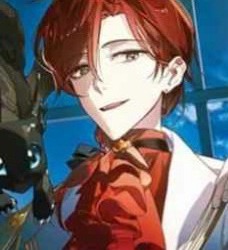
☆ cale looks crossed eyed lel
. Im glad I'm not the only one who struggles with eyes still
. Or maybe this artist did it right n I just don't know how to draw eyes- (very plausible tbh)
Man I love artists
---
All in all, Im not a fan of vol. 2 cover art but I can see why the artists did what they did
◇ . One of the most important things of commercial art is that its visually pleasing, regardless of design, lore, or even logic. The design choices are golden but putting them all together couldve been done better. Not that the art is ugly in any way. Its still gorgeous af, there just couldve been more balance or overall color synergy.
This is just my opinion anyways :D! No hate anywhere <33
#textpost#man im a fcking nerd LMAO#lcf#tcf#lout of the count’s family#lout of count’s family#trash of the counts family#trash of the count's family#cale henituse#choi han#art analysis#spoiler free#color analysis#design analysis#oh jeez what a hefty post#i love art man
111 notes
·
View notes
Text
I wrote this about a year or two ago and just realized I never posted it here.
Major spoilers if you haven't read the ORV webnovel obviously.
This took me 2 whole months of nonstop work to finish and is my pride and joy. It's not exactly fanart or fanfiction but I still believe it will be an enjoyable read for anyone who's read the novel.
Here's a small spoiler free expert:
In its entirety ORV is a story about sacrifice, found family, and well, stories. Every major character in ORV, even the ones that weren't touched much on in this essay like Lee Gilyoung or Shin Yoosung, sacrifice something, or many things, for either the sake of the world or just their family. Many times the people around Kim Dokja will attempt to sacrifice themselves before he has a chance, because the scenarios almost always require a sacrifice to defeat them. Kim Dokja knew this and decided to make sure he was the sacrifice every time, and it's only once Kim Dokja is gone that the other characters start to make the big sacrifices themselves. While sacrifice is one of the main themes, the moral is not ‘sacrifices are necessary for a happy life/world.’ It’s actually the opposite: ‘the sacrifice of something loved can never bring the happiness of the people it was sacrificed for.’ Kim Dokja’s family is never happy to be alive, or happy they completed the scenario, after Kim Dokja sacrifices himself for them, the only emotions they feel after are always negative. When sacrifices are made it may seem selfless or necessary to others, but it is always a truly selfish act in the end.
#orv#omniscient reader#omniscient reader's viewpoint#kim dokja#yoo jonghyuk#han sooyoung#writing#my writing#ORV webnovel#orv spoilers#kim dokja x yoo joonghyuk#not really but kinda#just an analysis of their relationship
152 notes
·
View notes
Text
thinking about chimney and how he’s always tried to craft himself as “perfect” for others. he learns at a young age that his father can’t— or won’t— love him for who he is, that despite his best efforts to prove himself worthy, sang never cares. chimney isn’t good enough for his own father to stay. but at least he has his mother, right?
well, she dies a few years later, and so does the last part of his true self. then, chimney is taken in by kind, generous people who have so much love to give. he gains a brother and takes on the role of being his protector. even though he floats through life without any real purpose, picking up odd jobs along the way, he had the lees as pillars of support.
then chimney joins the LAFD because he thinks he’s discovered what his purpose is: helping people in need. but he can’t even do that because the toxic environment he’s in, his horrible boss, makes him stay behind and he feels useless. every day, kevin tells stories of his heroics and all chimney can do is sit back and listen, lacking a story selection of his own. then he starts making up tales because to him, the facade will keep his family around and not resent him for struggling.
then he loses his role of a protector when kevin falls through the roof of an apartment building, immediately engulfed by the flames below. mr and mrs lee don’t talk to him for a while after that, and chimney can’t blame them; he was the one setting an example for kevin, and that got him killed. he loses himself in a way similar to the aftermath of his mother’s death, firefighting being the only thing keeping him afloat.
hen and bobby join the 118, and chimney feels like he can be himself around them without judgment. it’s freeing. but then he meets tatiana, and the fear of abandonment rises again. so chimney lies and lies, trying to appear perfect because surely, she can’t leave him if he’s the man of her dreams, right?
she rejects his proposal and he’s left with a rebar through the skull, which acts as a wake up call. chimney heals, returns to work, but still resorts to humour rather than confronting his brush with death. he can’t let anyone know what’s wrong, how he always feels stuck in the worst moment of his life.
everything catches up to chimney and he breaks down in bobby’s arms. things calm down for a bit after that and he meets maddie. everything is great, she’s incredible. eventually, they’re set to go out on their first date but chimney gets stabbed (thrice, in fact) and spends the next 24 hours blaming himself for inadvertently bringing harm to maddie. he doesn’t talk about how doug stalked and nearly killed him, because according to his logic, he put maddie in danger and doesn’t want people to see him as selfish for talking about his trauma. so he rolls with that notion for the next few years. his heart gets stopped twice but he’s cracking jokes and being chimney since everyone expects him to be normal. he gets impaled again, in the abdomen this time, but is cheery and returns to work without a hitch. he catches encephalitis and is forced to confront doug and kevin, two of his biggest traumas. considering his track record with opening up about his turmoils, it’s safe to assume chimney didn’t confide to anyone about what he hallucinated. maybe he revealed kevin’s role, but certainly not doug’s, because he’s stuck in that mindset as he was from s2.
chimney crafts himself as a cheery, go lucky person because that’s what he wants people to see, and in turn, that is what they expect of him. if he shatters that perception, he worries his fear of abandonment will become true once more.
#chimney han#911#character analysis#character meta#i have Big feelings about him. god#he makes me so unwell#dean talks
61 notes
·
View notes